CrO3 dissolves in aqueous NaOh to give
CrO2−4
Cr(OH)3
Cr2O2−7
Cr(OH)2
The correct Answer is:a
CrO3+2NaOH→Na2CrO+H2O
Similar Questions
Knowledge Check
Compound (A) C7H8O is insoluble in aqueous NaHCO3 and dissolves in aqueous NaOH and gives a characteristic colour with neutral FeCl3 . When treated with Br2 (A) forms compound (B) C7H5OBr3 .
The structure of compound (B) would be :A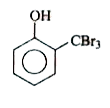 B
B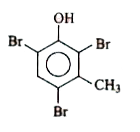 C
C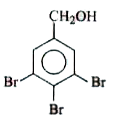 D
D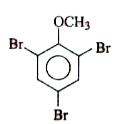
Compound (A) C7H8O is insoluble in aqueous NaHCO3 and dissolves in aqueous NaOH and gives a characteristic colour with neutral FeCl3 . When treated with Br2 (A) forms compound (B) C7H5OBr3 .
The most probable structure of compound A is :A B
B C
C D
D
Compound (A) C7H8O is insoluble in aqueous NaHCO3 and dissolves in aqueous NaOH and gives a characteristic colour with neutral FeCl3 . When treated with Br2 (A) forms compound (B) C7H5OBr3 .
The most probable structure of compound A is :A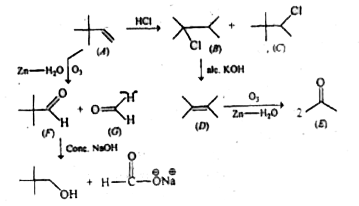 B
B C
C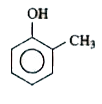 D
D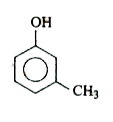
Which element of the carbon family does not dissolve in aqueous NaOH to evolve hydrogen gas?
View SolutionWhich element of the carbon family does not dissolve in aqueous NaOH to evolve hydrogen gas?
View SolutionA white substance (A) reacts with dilute H2SO4 to produce a colourless suffocating gas (B) and a colourless solution (C )/ The reaction of gas (B) with potassium iodate and starch solution produce a blue colour solution. Aqueous Solution of (A) gives a white precipitate with BaCl2 solution which is soluble in dilute HCl. Addition of aqueous NH3 or NaOH to (C ) produced first a precipitate which dissolves in excess of the respective reagent to poduced a clear solution. Similarly addition of excess of potassium ferrocyanide to (C ) produced a precipitate (D) which also dissolves in aqeous NaOH giving a clear solution. Identify (A),(B),(C ) and (D ). Write the equation of the reactions involved.
View SolutionAn organic compound (A) (C8H8O3) was insoluble in water, dilute HCI, and NaHCO3. It was soluble in NaOH. A solution of (A) in dilute NaOH was boiled and steam distilled and distillate was reacted with NaOH to give a yellow precipitate. The alkaline residue is acidifield to give a solid (B) (C7H6O3). (B) dissolves in aqueous NaHCO3 with the evolution of gas. Identify (A) and (B).
View SolutionWhich of the following compounds will not dissolve in aqueous NaOH?
View Solution
